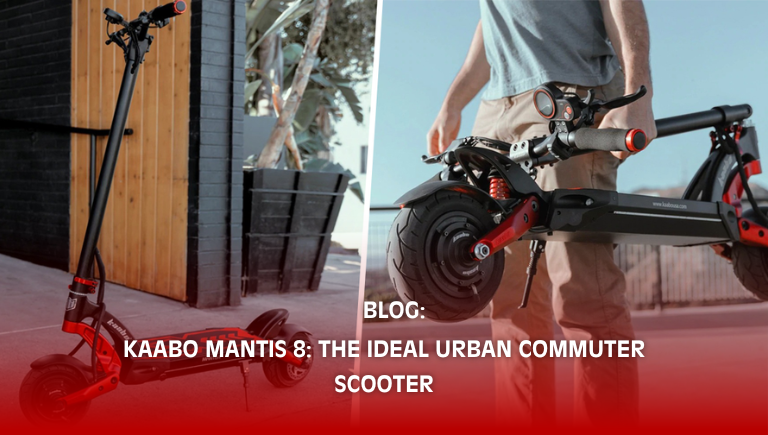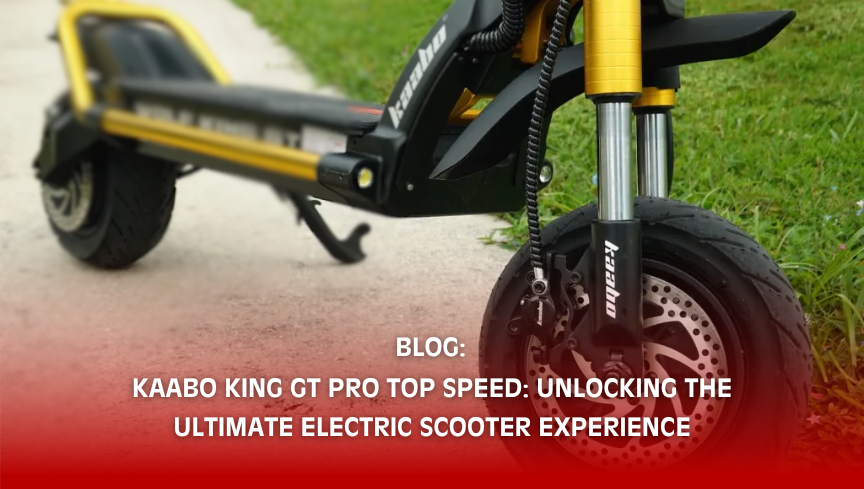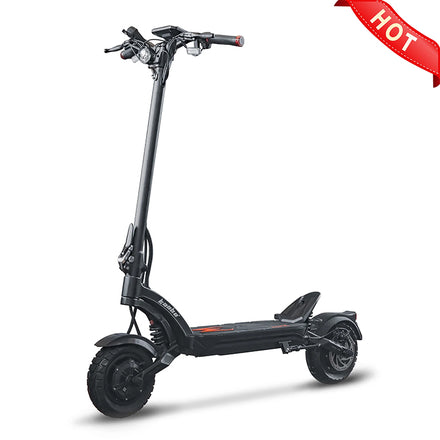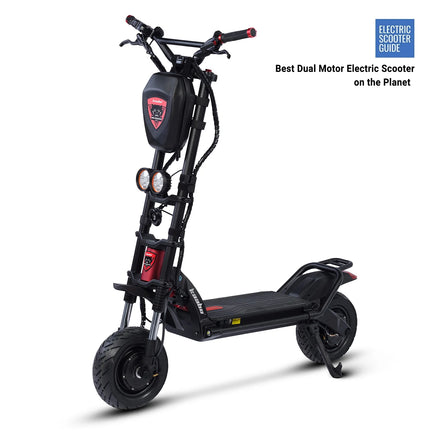Electric Scooter Safety: Key Features and Gear for a Safe Ride
Introduction
Electric scooters have surged in popularity as a sustainable and efficient mode of transportation. Whether you're commuting to work, running errands, or simply enjoying a ride, safety is paramount. This blog dives deep into the critical aspects of electric scooter safety, covering essential features, gear, and best practices to help you ride with confidence.
The Importance of Electric Scooter Safety
Electric scooters, while convenient, present unique safety challenges. Understanding these challenges and how to mitigate them can significantly reduce the risk of accidents. Common issues include:
- Visibility: Ensuring you're seen by other road users.
- Stability: Maintaining balance on various terrains.
- Speed Control: Managing your speed to prevent accidents.
Key Safety Features of Electric Scooters
Modern electric scooters come equipped with various safety features designed to protect riders. Here are some crucial elements to look for:
1. Braking Systems
A reliable braking system is essential for any electric scooter. There are typically three types of brakes:
- Disc Brakes: Offer powerful stopping power and are great for high-speed rides.
- Drum Brakes: Enclosed and less likely to suffer from dirt and water interference.
- Regenerative Brakes: Convert kinetic energy back into stored energy, extending battery life.
2. Lighting and Reflectors
Good visibility is critical, especially when riding at night. Key lighting features include:
- Front and Rear Lights: Ensure you’re visible from both directions.
- Brake Lights: Indicate to others when you're slowing down.
- Reflectors: Enhance visibility from multiple angles.
3. Speed Control and Limiters
Speed control features help prevent accidents by maintaining safe riding speeds. Many scooters come with:
- Speed Limiters: Cap your maximum speed for safer rides in different zones.
- Cruise Control: Maintain a consistent speed without constant throttle adjustments.
4. Suspension Systems
Suspension systems absorb shocks from uneven terrain, improving stability and comfort. Look for:
- Front Suspension: Reduces the impact from road bumps.
- Rear Suspension: Adds additional stability and comfort.
5. Tire Quality
Tires are your scooter's contact point with the road. Quality tires enhance grip and stability. Types include:
- Air-filled (Pneumatic) Tires: Offer better shock absorption.
- Solid Tires: Less maintenance but may provide a rougher ride.
Essential Gear for Safe Riding
Beyond the scooter's built-in safety features, the gear you wear plays a significant role in protecting you. Here’s what you need:
1. Helmet
A helmet is non-negotiable. It protects your head in case of a fall or collision. Look for:
- Certification: Ensure it meets safety standards (e.g., CPSC, ASTM).
- Fit: Snug but comfortable, covering the forehead without obstructing vision.
2. Protective Clothing
Wear gear that shields your body from scrapes and bruises:
- Jackets and Pants: Made from durable materials like Kevlar.
- Gloves: Protect your hands and improve grip.
3. Reflective Gear
Enhance your visibility, especially in low-light conditions:
- Reflective Vests: Increase visibility to other road users.
- Reflective Strips: Attach to your helmet or clothing.
4. Knee and Elbow Pads
These pads provide extra protection during falls, absorbing impact and reducing injuries.
Practical Tips for Safe Riding
In addition to having the right features and gear, following practical riding tips can enhance your safety:
1. Know Your Scooter
Familiarize yourself with your scooter's controls, braking system, and performance limits.
2. Stay Visible
Always make yourself visible to others. Use lights, wear reflective gear, and avoid riding in blind spots.
3. Ride Defensively
Anticipate potential hazards and be prepared to react. Keep a safe distance from other vehicles and pedestrians.
4. Observe Traffic Laws
Follow the same rules as cyclists. Obey traffic signals, signs, and lane markings.
5. Maintain Your Scooter
Regularly check your scooter for any wear and tear. Ensure brakes, lights, and tires are in good condition.
Safety Considerations for Different Riding Environments
The environment you ride in can affect your safety. Here’s how to navigate various conditions:
1. Urban Areas
Urban settings present unique challenges such as heavy traffic and pedestrians. Key tips include:
- Stay Alert: Constantly watch for cars, pedestrians, and road obstacles.
- Use Bike Lanes: Whenever available, use bike lanes for a safer ride.
- Avoid Rush Hour: Ride during less busy times to avoid heavy traffic.
2. Suburban and Rural Areas
These areas may have fewer vehicles but can present other hazards:
- Uneven Surfaces: Watch out for gravel, potholes, and uneven pavement.
- Wildlife: Be cautious of animals crossing the road, especially at dawn and dusk.
3. Night Riding
Riding at night requires extra precautions:
- Maximize Visibility: Use all available lights and reflective gear.
- Reduce Speed: Go slower to allow more reaction time to unexpected hazards.
Common Mistakes to Avoid
Even seasoned riders can make mistakes. Avoid these common errors to stay safe:
1. Overconfidence
Feeling too confident can lead to risky behavior. Always ride cautiously, regardless of experience level.
2. Ignoring Maintenance
Regular maintenance is crucial. Don’t neglect routine checks and repairs.
3. Riding Distracted
Stay focused on the road. Avoid using phones or listening to loud music while riding.
4. Underestimating Weather Conditions
Adverse weather can significantly impact safety. Avoid riding in heavy rain or strong winds.
Safety Technologies in Modern Electric Scooters
Recent advancements have introduced new technologies aimed at enhancing rider safety:
1. Anti-lock Braking Systems (ABS)
ABS prevents wheels from locking up during braking, reducing the risk of skidding.
2. Self-balancing Technology
Some scooters feature gyroscopic sensors to help maintain balance, especially useful for beginners.
3. GPS Tracking
GPS systems can track your route, speed, and location, adding an extra layer of safety.
Electric Scooter Safety Regulations and Standards
Different regions have specific regulations and standards for electric scooters. Ensure you’re compliant with local laws:
1. Speed Limits
Many areas impose speed limits on electric scooters. Know and adhere to these limits.
2. Helmet Laws
Some regions require helmets by law. Even if not mandatory, wearing one is highly recommended.
3. Scooter Specifications
Certain specifications, such as maximum power output, may be regulated. Check local requirements.
Conclusion: Ride Safe, Ride Smart
Electric scooters offer a fun and efficient way to travel, but safety should always come first. By understanding and utilizing key safety features, wearing the right gear, and following practical riding tips, you can enjoy a secure and pleasant ride.
FAQs
1. Do I need a license to ride an electric scooter?
- It depends on local regulations. In many places, a license isn't required, but always check your local laws.
2. Can I ride an electric scooter on sidewalks?
- Sidewalk riding is generally discouraged or illegal in many areas due to pedestrian safety concerns. Use bike lanes or roads where permitted.
3. How often should I check my electric scooter for maintenance?
- Regular checks should be done before each ride, with more thorough inspections monthly.
4. What should I do if I encounter a malfunction while riding?
- Safely pull over to the side, turn off the scooter, and inspect the issue. If it's serious, contact the manufacturer or a professional repair service.
5. Are electric scooters safe for children?
- Safety depends on the child's age, size, and riding skills. Many scooters have minimum age recommendations and should always be used with adult supervision and appropriate safety gear.
6. How do weather conditions affect electric scooter riding?
- Adverse weather, such as rain or snow, can make riding more dangerous due to slippery surfaces and reduced visibility. It's best to avoid riding in such conditions.
7. What are some additional accessories I can use to enhance safety?
- Additional accessories include mirrors, phone mounts for GPS navigation, and horn or bell for alerting others.
Final Thoughts
Safety is a journey, not a destination. Staying informed, prepared, and cautious ensures that your electric scooter rides remain enjoyable and accident-free. Ride smart, and always prioritize your safety!
Lastest Blog Post






Related Product
Newletter
Promotions, new products and sales. Directly to your inbox.


















